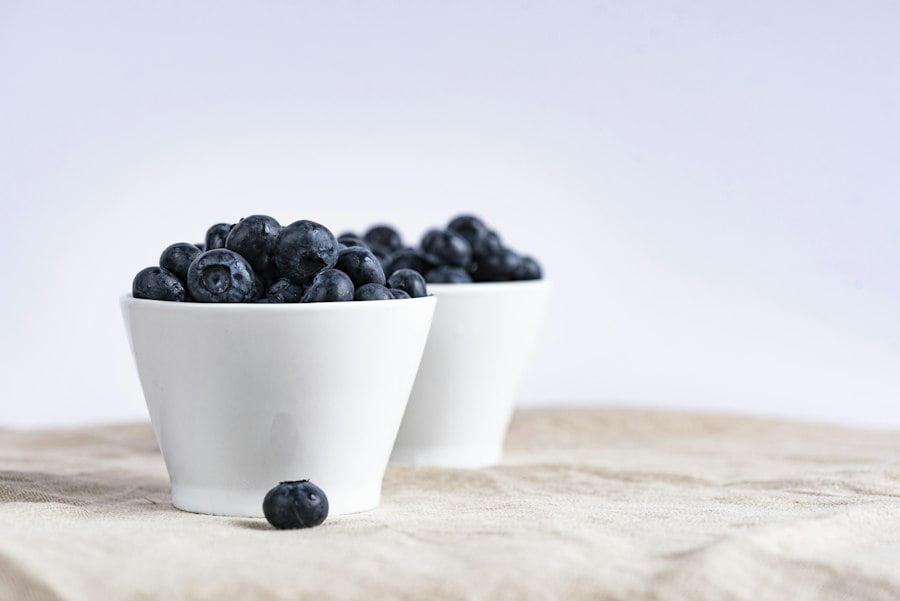
Lower Your Blood Pressure Naturally: 7 Healthy Habits to Adopt Today
Blood pressure is the force of blood against the walls of the arteries as the heart pumps it around the body. It is an essential measurement of cardiovascular health and is measured in millimeters of mercury (mmHg). High blood pressure, also known as hypertension, is a common condition that can lead to serious health problems such as heart disease, stroke, and kidney disease. It is important to keep blood pressure at a healthy level to reduce the risk of these complications.
Lowering blood pressure naturally through healthy habits is an effective way to manage and prevent hypertension. By making simple lifestyle changes, individuals can reduce their blood pressure and improve their overall health. These habits include eating a balanced diet, reducing sodium intake, engaging in regular physical activity, managing stress, quitting smoking, limiting alcohol consumption, and getting enough sleep. By adopting these habits, individuals can take control of their blood pressure and improve their quality of life.
Key Takeaways
- Lowering blood pressure naturally is important for overall health and well-being.
- Eating a balanced diet is a healthy habit that can help lower blood pressure.
- Reducing sodium intake is another healthy habit that can help lower blood pressure.
- Regular physical activity is important for maintaining healthy blood pressure levels.
- Managing stress, quitting smoking, limiting alcohol consumption, and getting enough sleep are all healthy habits that can contribute to lower blood pressure.
Healthy Habit #1: Eating a Balanced Diet
A balanced diet plays a crucial role in maintaining healthy blood pressure levels. It is important to consume a variety of nutrient-rich foods that provide essential vitamins, minerals, and antioxidants. These nutrients help to support overall cardiovascular health and reduce the risk of high blood pressure.
Foods that are beneficial for blood pressure management include fruits and vegetables, whole grains, lean proteins, and healthy fats. Fruits and vegetables are rich in potassium, which helps to lower blood pressure by counteracting the effects of sodium. Whole grains are high in fiber, which can help to lower blood pressure by reducing cholesterol levels. Lean proteins such as fish, poultry, and legumes provide essential amino acids without adding excess saturated fat. Healthy fats found in avocados, nuts, and olive oil can help to lower blood pressure by reducing inflammation in the arteries.
Incorporating a balanced diet into daily life can be achieved by planning meals ahead of time, cooking at home, and making healthy choices when dining out. It is important to read food labels and choose low-sodium options whenever possible. Additionally, reducing the consumption of processed foods, which are often high in sodium and unhealthy fats, can have a significant impact on blood pressure levels.
Healthy Habit #2: Reducing Sodium Intake
Sodium is a mineral that is essential for the body, but consuming too much can lead to high blood pressure. The American Heart Association recommends limiting sodium intake to less than 2,300 milligrams (mg) per day, or even less for individuals with hypertension or other health conditions.
Reducing sodium intake can be achieved by making simple changes to the diet. It is important to read food labels and choose low-sodium options whenever possible. Foods that are typically high in sodium include processed meats, canned soups and vegetables, fast food, and snack foods such as chips and pretzels. Opting for fresh or frozen fruits and vegetables, cooking meals from scratch, and using herbs and spices to flavor food instead of salt can help to reduce sodium intake.
There are also many low-sodium alternatives to common high-sodium foods. For example, instead of using regular table salt, individuals can use herbs and spices to add flavor to their meals. Instead of using soy sauce, which is high in sodium, individuals can use low-sodium soy sauce or tamari. Instead of using canned soups, individuals can make homemade soups using low-sodium broth or stock.
Healthy Habit #3: Regular Physical Activity
| Healthy Habit #3: Regular Physical Activity | |
|---|---|
| Recommended amount of physical activity per week: | At least 150 minutes of moderate-intensity aerobic activity or 75 minutes of vigorous-intensity aerobic activity |
| Benefits of regular physical activity: | Improved cardiovascular health, weight management, reduced risk of chronic diseases, improved mental health, increased energy levels |
| Types of physical activity: | Aerobic exercise, strength training, flexibility exercises, balance exercises |
| Examples of moderate-intensity aerobic activity: | Brisk walking, cycling, swimming, dancing |
| Examples of vigorous-intensity aerobic activity: | Running, fast cycling, high-intensity interval training, team sports |
| Precautions to take before starting a physical activity program: | Consult with a healthcare provider, start slowly and gradually increase intensity, wear appropriate clothing and footwear, stay hydrated, listen to your body and rest when needed |
Regular physical activity is not only important for maintaining a healthy weight and preventing chronic diseases, but it also plays a significant role in lowering blood pressure. Engaging in regular exercise helps to strengthen the heart muscle, improve circulation, and reduce the risk of hypertension.
Incorporating physical activity into daily life can be achieved by making small changes to daily routines. Taking the stairs instead of the elevator, parking further away from destinations, and walking or biking instead of driving are all simple ways to increase physical activity levels. Additionally, engaging in activities such as swimming, cycling, jogging, or dancing for at least 30 minutes a day can have a significant impact on blood pressure levels.
It is important to start slowly and gradually increase the intensity and duration of physical activity. It is also important to choose activities that are enjoyable and can be sustained long-term. Finding a workout buddy or joining a fitness class can help to stay motivated and accountable.
Healthy Habit #4: Managing Stress
Stress is a common factor in modern life and can have a significant impact on blood pressure levels. When individuals are stressed, their bodies release stress hormones that can cause blood vessels to constrict and increase blood pressure.
Managing stress in daily life is essential for maintaining healthy blood pressure levels. There are many techniques and activities that can help to reduce stress and promote relaxation. These include deep breathing exercises, meditation, yoga, tai chi, and engaging in hobbies or activities that bring joy and relaxation.
It is important to prioritize self-care and make time for activities that help to reduce stress. This may include setting aside time each day for relaxation, practicing mindfulness or meditation, or engaging in activities such as reading, listening to music, or spending time in nature.
Healthy Habit #5: Quitting Smoking

Smoking is a major risk factor for high blood pressure and cardiovascular disease. The chemicals in tobacco smoke can damage blood vessels and increase the risk of plaque buildup, leading to hypertension.
Quitting smoking is one of the most important steps individuals can take to lower their blood pressure and improve their overall health. It is important to seek support from healthcare professionals, friends, and family members when quitting smoking. There are many resources available such as nicotine replacement therapy, medications, counseling, and support groups.
It is important to have a plan in place and set a quit date. Removing triggers such as cigarettes, lighters, and ashtrays from the home can help to reduce the temptation to smoke. Finding healthy alternatives to smoking such as chewing gum or engaging in physical activity can also help to manage cravings.
Healthy Habit #6: Limiting Alcohol Consumption
While moderate alcohol consumption may have some health benefits, excessive alcohol intake can lead to high blood pressure and other health problems. Alcohol can raise blood pressure by increasing heart rate and constricting blood vessels.
Limiting alcohol consumption is important for maintaining healthy blood pressure levels. The American Heart Association recommends limiting alcohol intake to no more than one drink per day for women and two drinks per day for men. It is important to be aware of what constitutes a standard drink, as different types of alcoholic beverages contain varying amounts of alcohol.
There are many ways to limit alcohol consumption. It is important to set limits and stick to them. Alternating alcoholic beverages with non-alcoholic drinks, drinking water between alcoholic beverages, and avoiding binge drinking can help to reduce the negative effects of alcohol on blood pressure.
Healthy Habit #7: Getting Enough Sleep
Sleep plays a crucial role in maintaining healthy blood pressure levels. Lack of sleep or poor quality sleep can lead to an increase in stress hormones, which can raise blood pressure.
Getting enough sleep is essential for overall health and well-being. The National Sleep Foundation recommends adults aim for 7-9 hours of sleep per night. Establishing a regular sleep schedule, creating a relaxing bedtime routine, and creating a sleep-friendly environment can help to improve sleep quality.
It is important to prioritize sleep and make it a priority in daily life. This may involve setting a consistent bedtime and wake-up time, avoiding stimulating activities before bed, and creating a comfortable sleep environment that is dark, quiet, and cool.
The Benefits of Adopting Healthy Habits to Lower Blood Pressure
Lowering blood pressure naturally through healthy habits is an effective way to manage and prevent hypertension. By adopting a balanced diet, reducing sodium intake, engaging in regular physical activity, managing stress, quitting smoking, limiting alcohol consumption, and getting enough sleep, individuals can take control of their blood pressure and improve their overall health.
These habits have numerous benefits beyond blood pressure management. They can help to reduce the risk of other chronic diseases such as heart disease, stroke, and diabetes. They can also improve overall well-being by increasing energy levels, improving mood, and promoting better sleep.
Additional Resources for Lowering Blood Pressure Naturally
For those looking to learn more about lowering blood pressure naturally, there are many additional resources available. Books such as “The DASH Diet Action Plan” by Marla Heller and “The High Blood Pressure Solution” by Richard D. Moore provide in-depth information and practical tips for managing blood pressure through lifestyle changes.
Websites such as the American Heart Association (www.heart.org) and the National Heart, Lung, and Blood Institute (www.nhlbi.nih.gov) provide valuable resources and information on blood pressure management. Additionally, there are many apps available for smartphones that can help individuals track their blood pressure, monitor their diet and exercise habits, and provide guidance on healthy lifestyle choices.
By utilizing these resources and adopting healthy habits, individuals can take control of their blood pressure and improve their overall health and well-being. It is never too late to make positive changes and prioritize cardiovascular health.
FAQs
What is blood pressure?
Blood pressure is the force of blood pushing against the walls of arteries as it flows through them.
What is considered a healthy blood pressure?
A healthy blood pressure reading is typically around 120/80 mmHg.
What are some healthy habits for maintaining a healthy blood pressure?
Some healthy habits for maintaining a healthy blood pressure include regular exercise, maintaining a healthy weight, reducing sodium intake, limiting alcohol consumption, and quitting smoking.
How does exercise help lower blood pressure?
Exercise helps lower blood pressure by strengthening the heart, reducing the amount of work it has to do to pump blood, and improving the elasticity of blood vessels.
How does reducing sodium intake help lower blood pressure?
Reducing sodium intake helps lower blood pressure by reducing the amount of fluid in the body, which in turn reduces the amount of pressure on the walls of blood vessels.
How does quitting smoking help lower blood pressure?
Quitting smoking helps lower blood pressure by improving the health of blood vessels and reducing the amount of stress on the heart.
What are some foods that can help lower blood pressure?
Some foods that can help lower blood pressure include leafy greens, berries, whole grains, low-fat dairy products, and lean proteins.


















